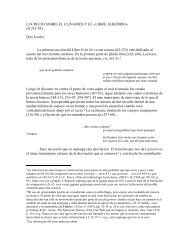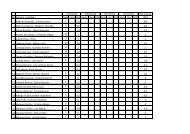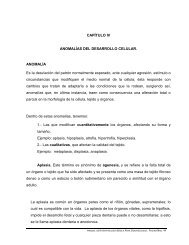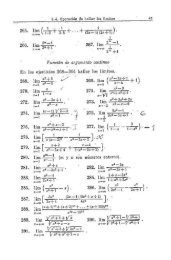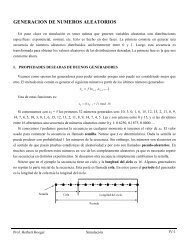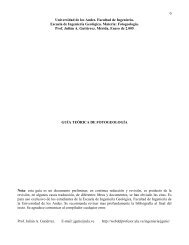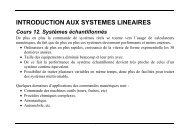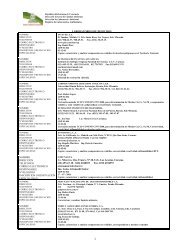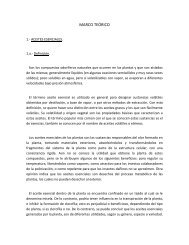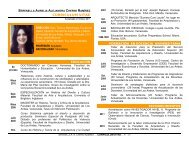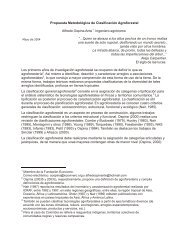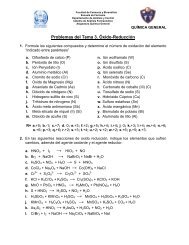Macrocyclic Ligands - Web del Profesor
Macrocyclic Ligands - Web del Profesor
Macrocyclic Ligands - Web del Profesor
You also want an ePaper? Increase the reach of your titles
YUMPU automatically turns print PDFs into web optimized ePapers that Google loves.
2 MACROCYCLIC LIGANDS<br />
polyammonium macrocycles, which are capable of forming<br />
a variety of complexes with anionic substrates. Oxygenderived<br />
macrocycles are noted for complexation with alkali<br />
and alkaline earth metal ions, as well as with organic cations<br />
and molecular substrates. In this latter situation, associations<br />
tend to be electrostatic in nature, and in many instances<br />
hydrogen-bonding interactions are vital to complex formation.<br />
<strong>Macrocyclic</strong> ligands will be classified, for the purposes of<br />
this article, as rings with at least nine members and three or<br />
more donor atoms. In a number of cases of unique structural<br />
units, elegant descriptive names have developed, which more<br />
appropriately describe the macrocyclic shape. Macrocycles<br />
will be classified as to donor types and, within the donor<br />
types, specific classifications of macrocycles will be noted<br />
where applicable.<br />
2.1 Polyaza Macrocycles (1)–(10) 9–18<br />
2.1.1 Simple Polyaza Macrocycles<br />
Until recently, the tetraaza macrocycles, such as (1)<br />
(cyclam) and related ligands with extensive varieties of<br />
modifications including differing degrees of saturation and<br />
ring size (2), had been the most studied, primarily because<br />
of the relationship of these molecules to naturally occurring<br />
tetraaza macrocycles, such as the porphyrins and corrins.<br />
Currently, with interest in metal–metal interactions, increased<br />
activity has occurred in the area of larger macrocycles<br />
capable of incorporating more than one metal ion, such as<br />
(3) ([24]aneN8). 18 Interest in the smaller triaza macrocycles,<br />
such as (4) ([9]aneN3) and its variations, has also accelerated<br />
in recent years. 14 Added to the simple polyaza macrocycles has<br />
been the effort to achieve functionalized macrocycles in order<br />
to expand the chemistry of these ligands by combining the<br />
rigid structural aspects of the macrocyclic ring with the more<br />
flexible and kinetically labile properties of pendant chains, as<br />
in (5). 11<br />
NH<br />
NH<br />
(1)<br />
HN<br />
HN<br />
2.1.2 Cyclidenes<br />
N<br />
N<br />
(2)<br />
N<br />
N<br />
Me<br />
Me<br />
NH<br />
NH<br />
NH HN<br />
NH<br />
(3)<br />
HN<br />
HN<br />
HN<br />
Cyclidenes (6) are a subset of the polyaza macrocycles<br />
and are the lacunar ligands first synthesized and extensively<br />
NH HN<br />
H<br />
N<br />
(4)<br />
HO 2C<br />
HO 2C<br />
N<br />
N<br />
(5)<br />
N<br />
N<br />
CO2H<br />
CO2H<br />
studied by Busch. 19 They coordinate a single metal ion and<br />
maintain a ‘persistent void’ which allows access to small<br />
molecules within the vaulted cavity.<br />
N<br />
N<br />
2.1.3 Sepulchrates<br />
N<br />
N<br />
N<br />
N<br />
R<br />
R<br />
NH HN<br />
NH<br />
NH HN<br />
HN<br />
R<br />
(6) (7)<br />
Sepulchrates (7) are polyaza cage macrocycles. They are<br />
noted for their exceptionally strong hold on encapsulated metal<br />
ions. 20<br />
2.1.4 Expanded Porphyrins<br />
Expanded porphyrins are macrocycles based on the pyrrolic<br />
backbone of porphyrins, but are expanded in size to achieve a<br />
larger cavity (8) 21 or binucleating capabilities (9). 22<br />
NH<br />
N<br />
N<br />
N<br />
N<br />
N<br />
N<br />
NH NH<br />
HN<br />
HN<br />
(8) (9)<br />
N<br />
N



